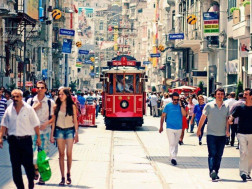In the EU, data shows that the share of female part-time workers in total female-employed people aged 15-64, in the third quarter of 2022, was higher (28%) than the share of men (8%), with women representing the highest shares in all occupational categories, reads the recent publication of EuroStat.
In the third quarter of 2022, 48% of women in elementary occupations were part-time workers against 19% of employed men. This category referring to helpers, cleaners or food preparation assistants amongst others registered the largest difference between the shares of female and male part-time workers (29 percentage points (pp)). This main group of occupations was followed by service and sales workers (35% women vs 15% men) and technicians and associate professionals (26% vs 7%).
The lowest difference between the shares of part-time workers in the female and male employment were registered in the managerial occupations (10% women vs 3% men) and plant and machine operators (13% vs 5%) categories, with a 7 and 8 pp difference, respectively.
At the country level, women recorded the higher share of part-time workers in total employed people aged 15-64 in all EU countries, except Romania where the share of men was higher: 4% for men against 3% for women. In Bulgaria, the shares of women and men part-time workers were very similar.
The Netherlands recorded the highest share of women working part-time, 63% of total employment against 24% for men, and the largest difference between women and men (39pp). The other EU countries that recorded the largest differences between women and men were Austria (39 pp) and Germany (37 pp).
















